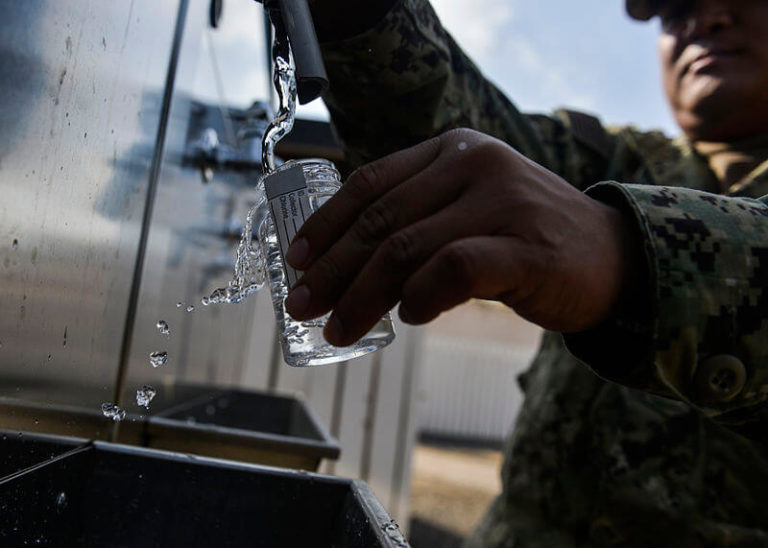Military Installations with Confirmed PFAS Water Contamination

Research shows that the firefighting foam the Department of Defense (DoD) has used for decades contains chemicals that, at elevated exposure levels, can increase the risk of cancer and other health issues. As a result of these findings, DoD has spent about $200 million at or near 263 military installations for environmental investigations and responses related to PFAS-contaminated drinking water. In September of 2018, GAO released its follow-up report, “Status of DoD Efforts to Address Drinking Water Contaminants Used in Firefighting Foam”.
Locations of PFAS-Contaminated Drinking Water
According to GAO’s September 2018 report, DoD has identified 401 active or closed military installations spanning across the United States with known or suspected releases of PFAS as of August 2017. The GAO report also included a breakdown of these installations and the amount of spending directed towards investigation and cleanup efforts thus far:
- 203 Air Force installations; $153 million
- 127 Navy installations; $44.5 million
- 66 Army installations; $1.6 million
GAO reported in October 2017 that DoD had initiated actions to address the elevated levels of PFAS in drinking water at or near military installations. The September 2018 report indicates that DoD has since taken further action to include providing alternate drinking water and installing treatment systems at the above-mentioned locations throughout the U.S. According to DoD, it may take several years for the department to determine how much it will cost to clean up PFAS contamination at or near its military installations. However, DoD believes a legally enforceable Environmental Protection Agency (EPA) drinking water cleanup standard would ensure greater consistency and confidence in their total cost estimate.
EPA’s Current Standards
In May 2016, EPA issued non-enforceable drinking water health advisories for PFAS stating that levels cannot exceed 70 parts per trillion. Health advisories include recommended levels of contaminants that can be present in drinking water at which adverse health effects are not anticipated to occur over specific exposure durations. To date, PFAS are unregulated because EPA has not made a positive regulatory determination for these chemicals. Regulatory determinations are based on the following criteria, all of which must be met for EPA to decide that a drinking water regulation is needed:
- “The contaminant may have an adverse effect on the health of persons;
- The contaminant is known to occur or there is a substantial likelihood that the contaminant will occur in public water systems with a frequency and at levels of public health concern; and
- In the sole judgment of the EPA administrator, regulation of such contaminant presents a meaningful opportunity for health risk reduction for persons served by public water systems”.
EPA has only been able to issue health advisories up to this point. After issuing such health advisories, each of the military departments directed their installations to identify locations with any known or suspected prior release of PFAS and to address any releases that pose a risk to human health, which can include people living near, but outside of, DoD installations. The installations were also instructed to test for PFAS in their drinking water and address any contamination levels above EPA’s health advisories. Ultimately, complying with these orders produced the list of military installations with confirmed PFAS water contamination included above.
About the Author
Share this Post
